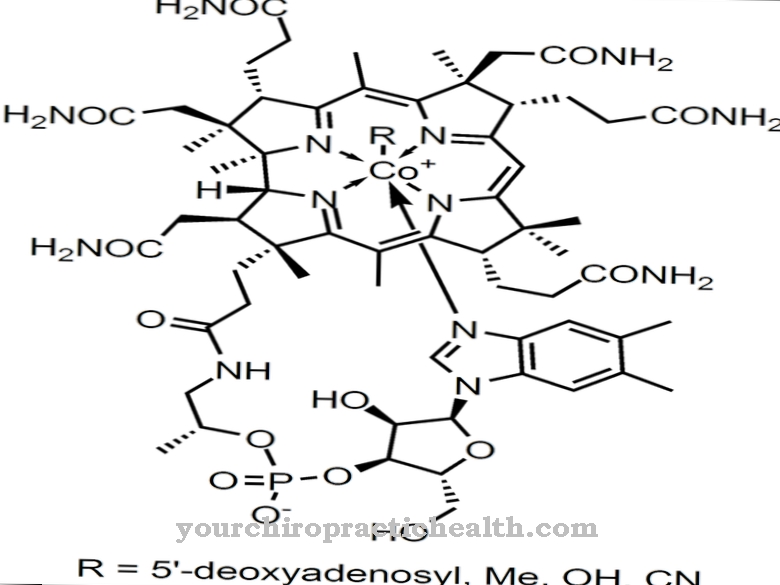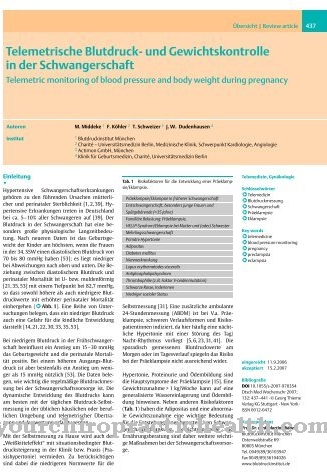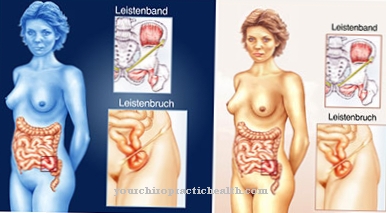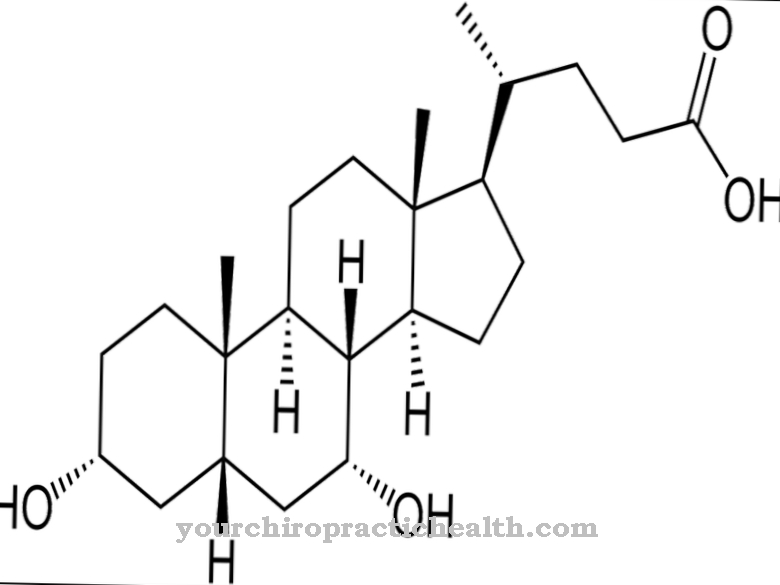The influence of genes on the human body has been intensively researched scientifically for many years. Although great progress has already been made in the decoding of the human genome, there are still some controversial points: How do genes and environmental influences play a role in the expression of certain physical and psychological characteristics? How strongly is an individual influenced by the inherited genes of the parents and how strongly is it influenced by their upbringing and other external influences (e.g. diet)? These questions should be explained using the two physical characteristics of height and weight. It also explains why certain ideal values should not determine the relationship to one's own body.
Factors influencing body size
The genetic material of every person is stored in the DNA or DNA (deoxyribonucleic acid, DNA) in the cell nuclei. DNA consists of strands wound in a loop and connected to one another by chemical building blocks. A gene is a unit in DNA that controls the functions of each body cell and thus contains information about the development of an individual.
As a result, the genes determine the later physical characteristics of a person, some genes even determine psychological characteristics. There are genes that alone control the expression of a body characteristic, this is the case, for example, with eye color. The development of height is an example of a physical trait that several genes control together. So far, according to SPIEGEL ONLINE, around 180 genetic regions are known to which a role is assigned. In addition, there are even more complex areas in the human body in which a large number of genes act in concert. These include, for example, intelligence and basic character traits such as empathy.
Genetics play a major role in the development of body size. About 90 percent of the height a person reaches is determined by their genes. The genetic make-up determines the upper limit, the last percent is determined by environmental influences. This is not only the case with body size, according to this source, mental development should also be determined to a certain extent by external influences. Encouragement and motivations, as well as the opportunities that a person may or may not have in the course of their lives, are very likely to have an impact on their mental development. Pre-existing illnesses and emerging illnesses, as well as diet, can also have an impact on body size.
The influence of external living conditions on body size
Previous illnesses & emerging diseases
For a long time, the prevailing opinion in science was that genes are the decisive factor in human development. However, the latest scientific findings in the field of epigenetics have revealed that the various forms of genes can be influenced by external circumstances and sometimes even controlled in a targeted manner. These findings are explained in more detail in a French video documentation from 2015.
Accordingly, a finding that has now been accepted in science is that both inherited genes and the environment together shape an individual. On the one hand, each person is given certain variants of genes that enable the individual to a probable expression of certain characteristics, on the other hand, the environment can influence the switching on and off of the respective genes. Numerous diseases are closely linked to DNA, however, according to a comprehensive study, in most cases it is still unclear which gene variants or gene mutations actually trigger a disease.
Hygienic conditions
There are studies in medical and epidemiological research that show a causal relationship between hygiene and the average height of the population. Chronic illnesses that are caused or exacerbated, for example, by inadequate hygienic conditions, can impair growth and physical development.
Inadequate hygiene in sanitary facilities, especially in some developing countries, is a major cause of the spread of bacteria that can affect the growth of children. In research, growth disorders are also often examined in connection with the aspect of malnutrition.
Available nutrients & nutrition
Diet has a major influence on a person's physical development. Humans have enzymes that the environment uses to influence genes and thus the genetic make-up. However, the exact effects are difficult to measure, as they often last for decades. In addition, it is almost impossible to determine exactly what influence the interaction of certain genes has.
Proteins or protein substances are among the most important nutrients for the human body. Protein is one of the main nutrients; the human body needs proteins for building cells and muscles as well as for maintaining a functioning metabolism and for fighting off pathogens. People need an increased intake of protein to maintain and build up their body substance, which is particularly true of children and adolescents in the growth phase.
During this time, the body must be supplied with sufficient high-quality protein every day. This is contained in both animal (meat, eggs, fish, cheese and other dairy products) and plant-based products (nuts, whole grains, beans and peas).
The explanations may lead to the assumption that an increased protein intake can have a positive effect on body growth. On the one hand, however, this has not been scientifically proven; on the other hand, an increased protein intake can be harmful for small children and young people. If the supply of protein is above the daily requirement for children (around 5 grams per kilogram of body weight), this can lead to excessive strain on the kidneys. However, it is important to ensure a balanced diet (carbohydrates, proteins, fats) in order to supply the body with all the nutrients and vitamins it needs.
Better education about a healthy and balanced diet and ongoing medical advances are the main causes of the increase in average height and physical development.

Interesting facts from the science of auxology
The average height of Germans - development & inventory
From the middle of the 19th century to the end of the 1970s, according to information from the Deutsches Ärzteblatt, a significant increase in body size and the speed of physical development can be observed in most European countries. Accordingly, the growth in height in adults was 1-2 centimeters (cm) per decade. Since the beginning of the 1980s, the increase in size for an adult European has been smaller. For Germany, the corresponding value is less than 1 cm per decade.
Reasons for this development
Scientific research suggests that even with a balanced and healthy diet and the best medical care, a person's growth potential is not infinite. Numerous scientific studies, including the study on adult health in Germany (2013), show a positive relationship between social status, state of health and behavior to maintain health, e.g. regarding eating habits.
There is a broad consensus in science that there is a positive connection between the development of body size and socio-economic status. Socio-economic status is a social science term and encompasses a number of characteristics of human living conditions. This includes the following aspects:
- Education and school leaving certificate as well as training or studies
- Profession and Income
- Place of residence and economic situation (ownership)
- Possession of cultural goods
- Opportunities to participate in cultural life (visits to theater performances and exhibitions in museums, etc.)
Despite the adequately documented relationship between physical development and socio-economic status, diet and psycho-social influences (psychological and emotional stress), it is not clear how these factors influence the biological mechanisms relevant for body growth.
Body positivity - a healthy relationship with your own body
A healthy body weight cannot be expressed by numbers alone. There should also be a positive attitude towards one's own body. This is a prerequisite for a healthy body image to develop and for measures to take effect.
Ideals of beauty are defined by the respective society, they are constantly changing. From an individual perspective, the beauty of the body is not always the actual goal of measures. It is a means to an end to express highly respected modern social values such as individuality, performance, flexibility and freedom. Media, advertising and the fashion and consumer goods industries play an important role in the development and dissemination of ideals of beauty.
Social networks reinforce this effect, they offer a platform on which people can present themselves as ideal. In this way, children and adolescents in particular come into greater contact with the various ideals of beauty, for example with regard to height and weight, than was the case a few years ago.

In addition to this external confrontation, the young people are also partly influenced by their parents: sticking to a so-called "permanent diet" in order to get closer to a certain level of performance and health in both professional and everyday life has become an important aspect of the individual ( western) lifestyle. Through these attitudes and behaviors, parents influence their children in addition to external pressure and help to solidify certain ideals.
As the psychoanalyst Susie Orbach explains in this interview, if more and more young people orientate themselves towards these generally unattainable ideals of beauty, this can lead to the fact that they perceive their body in a "wrong" way. This can have a negative impact on their self-esteem. In this context, a distinction must be made between a positive, neutral and negative body image:
Positive body image:
The person feels comfortable in their body, they are satisfied with it and they take care of their own physical needs. Often this goes hand in hand with beneficial behaviors, including above all a balanced and healthy diet and sufficient exercise.
Neutral body image:
Here the person is not completely satisfied with their body, but this does not unduly interfere with the generally positive self-image.
Negative body image:
A negative body image is an expression of dissatisfaction with one's own body. Individual parts of the body or the entire body can be rejected. This does not only apply to overweight or underweight people, a negative body image can also solidify in people of normal weight.
The term “body image” bridges the gap between the subjective feelings towards one's own body and the influence of the interaction with other individuals. This creates a connection to society. In order to be able to positively address body diversity, unrealistic ideals of beauty have to be broken. It is important to make the public aware of this issue. A critical handling of the ideal images conveyed by the respective society promotes subjective awareness both with regard to the general body diversity and one's own body.
Positive body diversity in women

There are socially constructed ideal images, there is no ideal body. This statement relates on the one hand to the individual acceptance of one's own body, and on the other hand to the social acceptance of different bodies or body shapes.
Every society has its own idea of what it means to be beautiful. A campaign is presented on www.gofeminin.de that aims to encourage and empower women not only to accept their own bodies, but to learn to love them and to recognize their individual beauty. As part of “Project WomanKIND” (translated as “Project Women’s World”), five Australian models, who have been discriminated against several times in their job because of their respective figures, report how they have confronted the sometimes derogatory comments with self-confidence.
Positive body diversity in men
There are four basic figure types in the male gender:
1) Tall men
2) Short men
3) Strong neck
4) Very pronounced waist circumference
Each of these figure types has certain characteristics, in this context “problem areas” are often used. However, these alleged flaws are comparatively unimportant, it depends on the overall picture, which is determined by the interaction of all body parts. Accordingly, it is not the local problem areas that determine the appearance, but the body proportions. By compiling and explaining the different figure types listed under this link, the individual proportions of men can be better assessed.
If a man recognizes himself in one of the figure types, there are various possibilities in the fashion sector to bring the respective body proportions into a harmonious balance through certain cuts, materials, colors, fabrics and patterns.
Body size as an example of gender differences
There are clear physical differences between men and women. This can be demonstrated, for example, on the basis of body size, as can be seen in this country table. Accordingly, the current average height of the male population in Germany is 1.80 meters.
Women are on average nine centimeters shorter (1.71 meters). Body size as a physical characteristic generally shows a certain range, there are both short men and tall women. Nevertheless, it can be stated that the proportion of women among the smallest people is significantly higher, whereas the number of men predominates among the largest people worldwide.
Nowadays, a large body size is considered desirable, it suggests persuasiveness, greater self-confidence and thus more success in life, for example at work. In most cases, however, those affected do not associate significant deviations in size, both upwards and downwards, with positive associations, but rather with major challenges in everyday life.
Human anatomy: short stature & tall stature
In every society there are certain norms for every area of life.Two examples: Social norms provide guidelines and orientation for people to live together. Norms for certain standards in the respective economic sectors or in the industries are intended, among other things, to guarantee a certain level of security. There are also certain norms with regard to body size; these are expressed, for example, by the prevailing average size of the population. It is difficult to express deviations from this norm in precise measurements because the average height of people is constantly changing.
Regarding the deviations in body size, there is talk of short stature and tall stature. When defining these two forms of growth, according to Planet Wissen, a distinction is made between the sexes. Adult women who do not exceed a height of about 1.50 meters are considered to be short. For men, this is already the case under a height of 1.65 meters.
The tall and tall people include women who are taller than 1.83 meters. The corresponding value for the male sex is 1.95 meters. In addition to the gender distinction, a distinction is made between the normal and the extreme form of small and large stature. The extreme form of short stature is achieved when the body size is less than 1.50 meters. At the other end of the scale, there is talk of gigantism or gigantism when people are over two meters tall.

Small and tall people usually attract looks. The feeling of being constantly observed can become a permanent psychological and physical burden. In addition, people with extreme forms of growth are confronted with a variety of challenges and problems in everyday life and at work, e.g. when choosing the right clothing, furnishing the home or the conditions at the workplace. In addition, there are health restrictions such as back and joint problems that occur relatively frequently or impairments as a result of incorrect posture.
In people with body sizes outside the norm, the metabolism and organs have to perform more than in people with a "normal" body size. Health problems due to a physical peculiarity do not only occur in small and tall people, overweight people also have an increased risk of many chronic diseases. The so-called body mass index is a well-known benchmark to determine whether a person is under, normal or overweight.
Body Mass Index (BMI) - a guideline for the relationship between body weight and height

Information on body weight should always be assessed subjectively. People can feel overweight even though their weight is perfectly okay from a medical point of view.
The so-called body mass index (MBI) is a guideline that determines the ratio of body weight to body height. The BMI is calculated from the body weight (kg) divided by the square of the body height (m²). The corresponding formula is:
- BMI = body weight: (height in m) ²
The recommended BMI value depends on the age of the person. The following table shows the BMI values for different age groups:
| Age | Body mass index |
| 19-24 years | 19-24 |
| 25-34 years | 20-25 |
| 35-44 years | 21-26 |
| 45-54 years | 22-27 |
| 55-64 years | 23-28 |
| > 64 years | 24-29 |
- Source: www.uni-hohenheim.de
Limitations & criticism of the BMI

The body mass index is only to be understood as a rough guide. According to this article, the BMI is increasingly criticized in science as a measuring instrument.
Reason: Serious studies of human health have to take numerous factors into account, so the complex topic of health prognosis cannot be expressed by a simple mathematical calculation. The BMI only evaluates a person's weight in relation to their height. Other important factors such as gender or body structure are not taken into account. With the above formula, however, no reliable statements can be made about the body fat and muscle percentage and the distribution in the body.
An alternative concept - The ABSI ("A Body Shape Index")
The two American scientists Nir and Jesse Krakauer have developed an alternative measuring method for health prognosis. The so-called "A Body Shape Index" (ABSI) takes into account not only body size and weight but also the waist circumference. It is a more complex calculation method than the relatively simple calculation of the body mass index.
Advantages over the BMI
By taking into account the waist circumference, the “A Body Shape Index” (ABSI) has more information about the individual physique than the body mass index. Excess fat deposits do not always harm your health, but according to current scientific studies, an increased percentage of fat in the abdomen is said to promote the development of various diseases such as diabetes, high blood pressure or disorders of the fat metabolism.
By determining the ABSI value, it is possible to estimate more precisely whether there is an increased health risk due to a certain body fat distribution. The disadvantage of the ABSI is that it is based on a complicated formula and excludes important factors such as possible previous illnesses.
Conclusion
A complex interplay of different genes is responsible for the development of body size. So far, researchers have only been able to explain a small part of the size differences genetically; DNA decoding remains the subject of scientific research. The individual characteristics of physical characteristics such as body size or weight are also influenced by factors from the environment.
Ultimately, however, the genes do not determine the relationship to one's own body. Acquiring a positive body image is not an easy endeavor, but it is an important step to not only accept your own body, but also to love it.





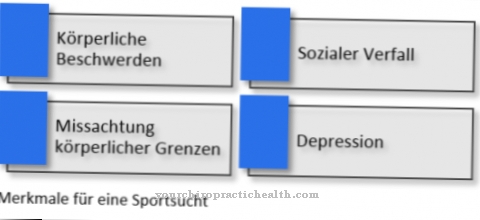



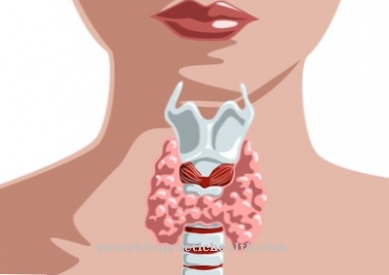


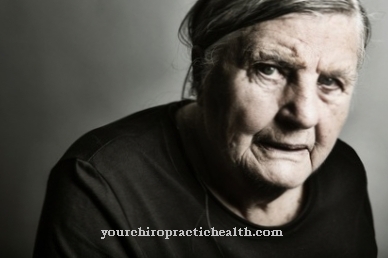



.jpg)


